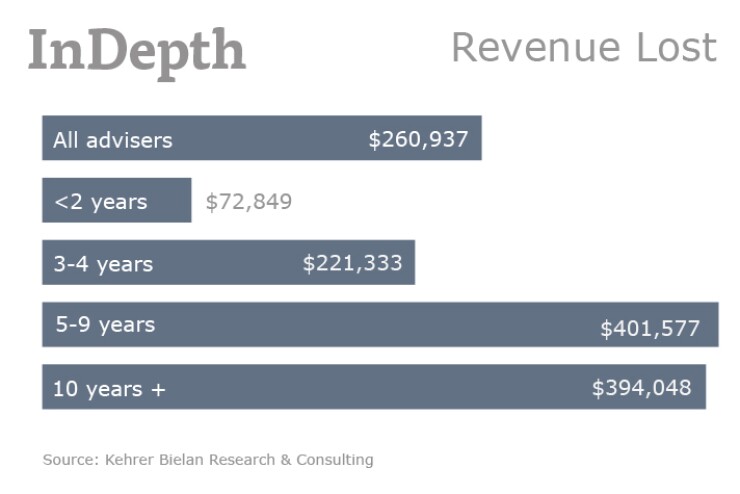In the battle for new advisers, U.S. Bank can now pitch a benefit that few of its rivals can: an adviser succession plan. The plan compensates soon-to-retire advisers as they transition their books to other advisers, while ensuring that their clients are left in good hands, says John Ekman, a division manager with U.S. Bank's Private Client Group in St. Paul, Minn.
"Clients are like a family to these advisers," he says, explaining that many senior advisers are serving second and even third generations of clients. Having worked with them as long as they have, retiring advisers take great comfort in the fact that "they're going to have a say in who their clients get to work with," Ekman says.
The new program was implemented not only to ease an adviser's transition and ensure an ongoing "great client experience" but also to bolster the bank's arsenal of recruiting tools, according to Ekman. Business succession planning was a "subject that always came up" when recruiting, he says, and was quickly identified as an area that would give the bank an advantage in the recruiting wars for top advisers.

"It opens up a lot of conversations," Ekman says.
The plan has been in place for 18 months and is intended for advisers looking to retire in three to five years. Once someone is selected to replace the retiring adviser, the two work closely together and share revenue over a three-year period.
In year one, the retiring adviser gets the lion's share of the revenue generated. In year two, revenue is split "almost fifty-fifty," says Ekman. By year three, the senior adviser has a smaller percentage of the payout.
At the end of year three, the expectation is that the retiring advisers will "retire completely," Ekman says.
Ekman declined to disclose the exact revenue split over time, saying the information was confidential.
"There comes a time in everyone's life when you decide it's probably time to phase yourself out," says Jim Sage, a longtime adviser with U.S. Bank in Sioux Falls, S.D., who is participating in the three-year transition program.
Aside from traveling and working with nonprofits, Sage, 67, plans to spend time with his 10 grandchildren who range in age from six months to 16-years-old. "We thought that might keep us busy," Sage says.
The bank's transition plan put his mind at ease about the clients he will leave behind. "You need to do what you can for them because you spent a lot of years with them and they look forward to their retirement plans working as well," he says.
As part of the transition, a new adviser with 15 years' experience was brought in to take Sage's place and together they've talked to all the clients, a process that took six months.
Finding an appropriate adviser to replace a senior adviser is crucial, says Ekman. "Retiring advisers are very specific in what type of individual they would like to team up with and have their book of business or their practice go to," he says. "The senior adviser would like the new team member to have the same type of views on the client experience and investment philosophy and not be a big change."
To assess the fit, new advisers go on trial client appointments with the senior adviser. "We always ask that they go out on a few appointments together so they see what's out there," Ekman says. "[This way] there's nothing that's going to come out of the blue."
For Sage, the initial phase of the transition has gone without a hitch. The new adviser who will replace him has worked with Sage's clients as well as his partner.
"Things are going well with them and going well with the clients," Sage says. "At this point, everybody's happy."





